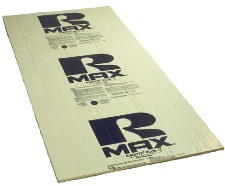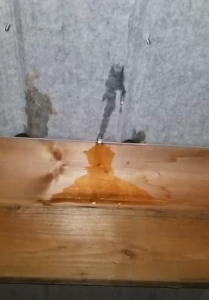What Type of Screws Should I Use?
Email all questions to: PoleBarnGuru@HansenPoleBuildings.com
DEAR POLE BARN GURU: Screws. I have used the common hex-head with steel/neoprene washer many times in the past. I have had some of them rust, and over the 16 years one building has stood many of them now appear loose, washers not quite touching the metal anymore. Seems apparent the wood is gradually rejecting the screw, or freeze/thaw cycles here in MN are loosening them. NOW I will start a house project within a year and will use exposed fastener ProRib roofing product again. Local Menards has something new, called Residential low-profile screw. No seperate steel washer, torx 25 button head is somewhat concave on bottom, and neoprene or rubber washer is slipped on. I like the idea that the washer will be trapped and compressed in the space, will not squish out and show to UV. HOWEVER the screws are advertised as galvanized, but are yellowish plated color so are obviously Cad plated. That mismatch of information leaves me nervous about using them. I could maybe use Stainless at four times the price of galvanized and painted. Unsure of best screw to choose now that I have looked behind the curtain and had some experience with them, I see limitations in all the types I am now familiar with. Any suggestions? Thanks! ROCKIN’ IN ROCHESTER
DEAR ROCKIN’ ROCHESTER: Screws are one of the most important components of any steel roofing application, and yet the quality of the screws is so often overlooked.
Rusting – the quality of galvanization is a place where a manufacturer can save money and no one is the wiser until years down the road, when the rust starts to appear. On steel panels, it is fairly easy to get an idea of the amount of galvanization, as the “spangle” or pattern of a highly galvanized panel is much tighter with more zinc.
Chances are the screws you see as rusting had a limited amount of galvanization on them. Often these screws have been imported from third world countries, which use a bare minimum of electroplated galvanization. Assuming they originally probably had painted heads, often the paint is damaged when the screws are installed, which reduces or removes the added protection afforded by the paint.
This is why I always recommend using powder coated screws, driven with a lobular driver bit. Powder coating also paints under the screw head, where rusting typically starts.
Why you have screws which appear loose…wood does not reject screws. The inherent nature of screw threads actually will cause properly driven screws to get tighter over time. And freeze/thaw cycle will not change this tendency. As a visual example, drive a screw partially into wood. Look at the wood fibers around the area where the screw penetrates the wood. The fibers are actually pulled up (as opposed to nailing which pushes them down). Wood has an elastic memory, so as it returns to its natural state, the fibers pull the screw in.
The culprit – the neoprene rubber washer. As the washer breaks down, due to UV radiation, it shrinks. As it shrinks, gaps appear between the washer and the steel roofing. When the gap becomes large enough, it allows minute amounts of water to enter around the shank of the screw. This water will eventually cause deterioration of the underlying roof purlins, and/or the shank of the screw itself.
I experienced this problem on the roof of my own home. In doing some remodel work, I had to remove some of the steel roof panels. After only 10 years of service, I was surprised to find the shanks of some of the screws had been rusted down to about the diameter of a toothpick!
The solution is to use screws which utilize vulcanized grey EPDM instead of neoprene rubber for washers. In combination with a “flow cone” steel washer (the cone nearly completely covers the EPDM), this provides for a 100% seal with no leaks.
The yellowish color is probably yellow zinc. It resembles Bright Brass plating, but appears more iridescent. It offers a modest amount of corrosion resistance (under approximately 100 hours of salt spray testing, about 10% will red rust).
Rather than going to the expense of stainless steel screws, look for JS500 plating. JS500 is a patented process developed by MacDermid, Inc. Developed for automotive applications, it has a very high corrosion resistance. Basically JS500 is a zinc electroplate followed by a conversion coating, which is then followed by an extra topcoat layer, which gives the plating additional performance.
When combined with powder coating, the JS500 plating exceeds 50 cycles in Kesternich testing with no red rust. Kesternich testing is a common name for sulfur dioxide testing (this test simulates the damaging effect of acid rain) where metal objects subject to corrosion are rated in Kesternich cycles.
In summary – JS500 plated, powder coated screws should afford all of the worry free protection you will ever need. The supplier who provides them for Hansen Buildings, guarantees the screws to last the lifetime of the steel panels, with no red rust. Pretty impressive in my book.










I am not a contractor but I fixed my chimney flashings using chimney nails or neoprene screws and cover the screws with gutter sillicon to stop water.
where can i purchase the js500 screws in 10 x 3″
Please Email Justine@HansenPoleBuildings.com with color and length. If you are replacing a previous screw, then you should probably be using a #14 diameter part.
I am trying to fix a solarium that has 33 8ft x 2ft double glazed heat treated plate glass windows in the eve section of the roof. The design of the room is beautiful but the extruded aluminum glazing system on top of the glue-lam beams is pure crap and needless to say the company that built the room is no longer in business. The mullion glazing cap is held in place by friction to the base glazing piece and by the glazing tape and silicone caulk, it fails constantly and water comes in on the beams. After 24 years of repairing I have decided to screw the top piece down to the bottom piece and on into the glue-lam beams and then recaulking every window, it won’t end the problem but it will eliminate the top glazing piece from popping up letting water in. I will need 264 screws as you describe, JS500 plated powder coated with EPDM steel washers, length and gauge I need advise on. The width of glass and glazing system is 1& 1/2 inch and I think it should go into the beam at least 1 inch for 2&1/2 inch total and the gauge maybe 10. I have found that the glue-lam beams are hard to drive screws into and maybe I should predrill the holes.
I don’t know how many come in a box but 300 is what I would like to buy, please advise.
Thank you for reaching out to us – the only screws we inventory are a #12 x 1-1/2″ diaphragm screw and a #12 x 1-1/4″ stitch screw. The manufacturer may be able to refer you to a dealer who can assist you: https://lelandindustries.com/